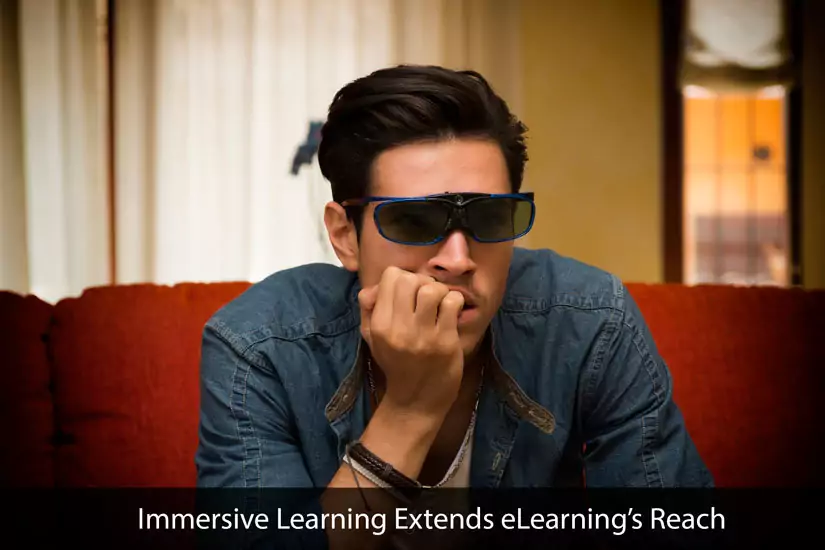Immersive Learning Extends eLearning’s Reach

Learning professionals are always on the lookout for ways to extend the reach of their eLearning efforts. I’ve written recently about two different ways to do that by Using Peer-to-Peer Approaches and Snowball Sampling. Another way to get the most out of your eLearning programs is to make sure to include the practice known as immersive learning.

Acquiring new knowledge and skills is often the goal of eLearning, but you also have to keep in mind the need for people to practice applying what they’ve learned. Anyone who has undertaken the task of learning a new language understands how important this is. I took four years of Spanish in high school and continued studying it in college, but had I found myself in a Spanish-speaking region or country of the world, I would have been hard-pressed to get by, let along flourish. It wasn’t until I studied abroad in Valencia, Spain, that it all started to click, and that’s because I completely immersed myself in a setting where I had to speak the language in the real world.
Download the free white paper How to Jumpstart an E-Learning Program in Eight (8) Easy Steps
All your eLearning efforts are geared towards changing behaviors in people that will lead to better performance. But how can people really apply what they’ve learned without first practicing it? That’s what immersive learning is all about. Take a hard look at your eLearning programs and ask yourself this question: How much of it is about the content and how much of it is about practicing the newly acquired skills or putting new knowledge to work? If you’re like many organizations, the answer to that question is surprisingly little. That needs to change if you’re going to realize the full potential of eLearning.
Anytime you learn something new, one of the things you have to deal with is failure. Think back to when you were a kid and learned how to ride a bike. There were probably a few spills involved in that process, but you eventually got the hang of it and never looked back. Whoever helped you learn (a parent in many cases), might have done some things that helped you figure it out, and these are things to keep in mind around offering opportunities for people to practice the takeaways of eLearning:
- A Safe Environment. A responsible parent doesn’t put their child on a bike for the first time out in a busy street, give a strong push and just hope for the best. Instead, a parent might have the child start out on the bike in a grassy area, which will result in less damage when that inevitable first crash takes place. In the same way, when eLearning is about a new skill or behavior, you need to provide a safe environment in which your learners can practice before they “go live.” This can be accomplished through role-playing or other contexts that simulate the real business environment but provide for a soft landing when things don’t go so well the first time out.
- Positive Encouragement. The parent teaching the child to ride a bike for the first time has to provide positive encouragement for the child to overcome the fear and trepidation it takes give it a try, attempting to balance and move forward in what initially feels very awkward and unstable. The parent has to give positive encouragement that the child can accomplish the goal of learning to ride a bike. The same holds true for your learners.
- Dealing with Failure. The parent will also give the child a realistic view of the fact that there will probably be some failures on the road to better performance. And that’s okay! Too often we treat failure in such a negative way that the fear of failure holds people back from trying new things. This applies to eLearning as well – your learners need to realize that some initial failures are not only normal, but probably required in order to really move forward.
When you establish an environment in which people have the chance to immerse themselves in practicing what they’ve learned, your eLearning results will reach a whole new level of success.